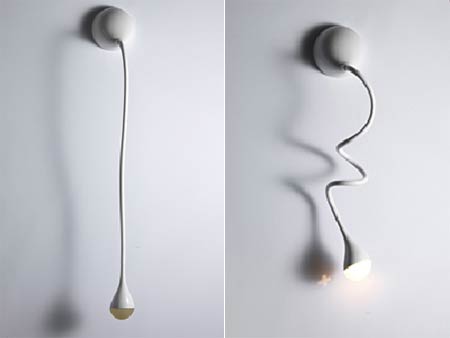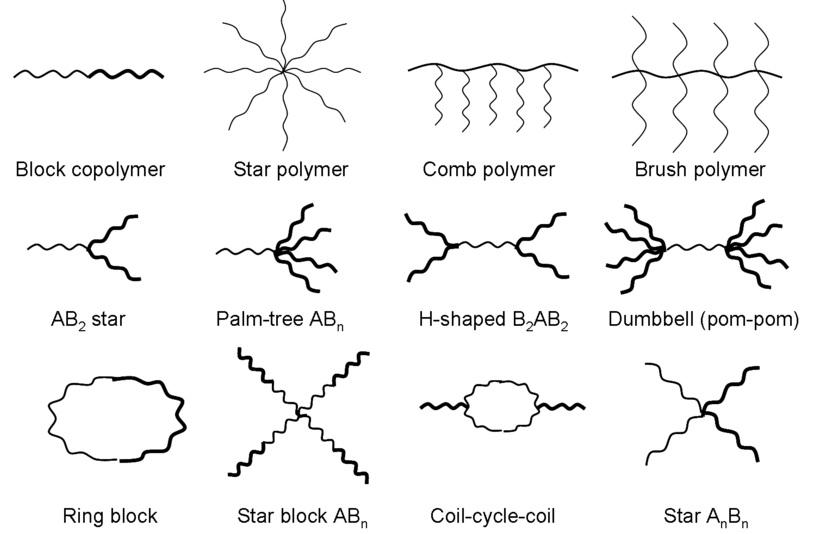Shape-memory polymer, What is it ?
Shape-memory polymers (SMPs) are polymeric smart materials that have the ability to return from a deformed state (temporary shape) to their original (permanent) shape induced by an external stimulus (trigger), such as temperature change.
Shape Memory Polymer
SMPs can retain two or sometimes three shapes, and the transition between those is induced by temperature. In addition to temperature change, the shape change of SMPs can also be triggered by an electric or magnetic field, light or solution. As well as polymers in general, SMPs also cover a wide property-range from stable to biodegradable, from soft to hard, and from elastic to rigid, depending on the structural units that constitute the SMP. SMPs include thermoplastic and thermoset (covalently cross-linked) polymeric materials. SMPs are known to be able to store up to three different shapes in memory.
One of the first conceived industrial applications was in robotics where shape-memory (SM) foams were used to provide initial soft pretension in gripping. These SM foams could be subsequently hardened by cooling making a shape adaptive grip. Since this time the materials have seen widespread usage in e.g. the building industry (foam which expands with warmth to seal window frames), sports wear (helmets, judo and karate suits) and in some cases with thermochromic additives for ease of thermal profile observation. Polyurethane SMPs are also applied as an autochoke element for engines.
Most medical applications of SMP have yet to be developed, but devices with SMP are now beginning to hit the market. Recently, this technology has expanded to applications in orthopedic surgery. SMPs are smart materials with potential applications as, e.g., intravenous cannula, self-adjusting orthodontic wires and selectively pliable tools for small scale surgical procedures where currently metal-based shape-memory alloys such as Nitinol are widely used. Another application of SMP in the medical field could be its use in implants: for example minimally invasive, through small incisions or natural orifices, implantation of a device in its small temporary shape. Shape-memory technologies have shown great promise for cardiovascular stents, since they allow a small stent to be inserted along a vein or artery and then expanded to prop it open. After activating the shape memory by temperature increase or mechanical stress, it would assume its permanent shape.
Certain classes of shape-memory polymers possess an additional property: biodegradability. This offers the option to develop temporary implants. In the case of biodegradable polymers, after the implant has fulfilled its intended use, e.g. healing/tissue regeneration has occurred, the material degrades into substances which can be eliminated by the body. Thus full functionality would be restored without the necessity for a second surgery to remove the implant (to avoid inflammation). Examples of this development are vascular stents and surgical sutures. When used in surgical sutures, the shape-memory property of SMPs enables wound closure with self-adjusting optimal tension, which avoids tissue damage due to overtightened sutures and does support healing and regeneration.
Further potential applications include self-repairing structural components, such as e.g. automobile fenders in which dents are repaired by application of temperature. After an undesired deformation, such as a dent in the fender, these materials “remember” their original shape. Heating them activates their “memory.” In the example of the dent, the fender could be repaired with a heat source, such as a hair-dryer. The impact results in a temporary form, which changes back to the original form upon heating—in effect, the plastic repairs itself. SMPs may also be useful in the production of aircraft which would morph during flight. Currently, the Defense Advanced Research Projects Agency DARPA is testing wings which would change shape by 150%.
Shape memory polymers is already been made into shape memory film by extruder machine, with covert and overt 3D embossed pattern internally, and 3D pattern will be released to be embossed or disappeared in just seconds irreversibly as soon as it is heated; Shape memory film can be used as label substrates or face stock for anti-counterfeiting, brand protection, tamper-evident seals, anti-pilferage seals, etc.
You might also like
| Shape Memory Alloy What is Shape Memory Alloy ? A Shape Memory... | Do you know Polymer ? What is Polymer ? The word polymer is derived... | What are Electroactive Polymers ? Electroactive Polymers Electroactive Polymers,... | Smart Materials What are Smart Materials ? Smart materials are... |


 Alloy Suppliers
Alloy Suppliers
 Aluminum
Aluminum
 Aluminum Extrusions
Aluminum Extrusions
 Copper-Brass-Bronze
Copper-Brass-Bronze
 Nickel
Nickel
 Magnets
Magnets
 Stainless Steel
Stainless Steel
 Stainless Steel Tubing
Stainless Steel Tubing
 Steel Service Centers
Steel Service Centers
 Titanium
Titanium
 Tungsten
Tungsten
 Wire Rope
Wire Rope